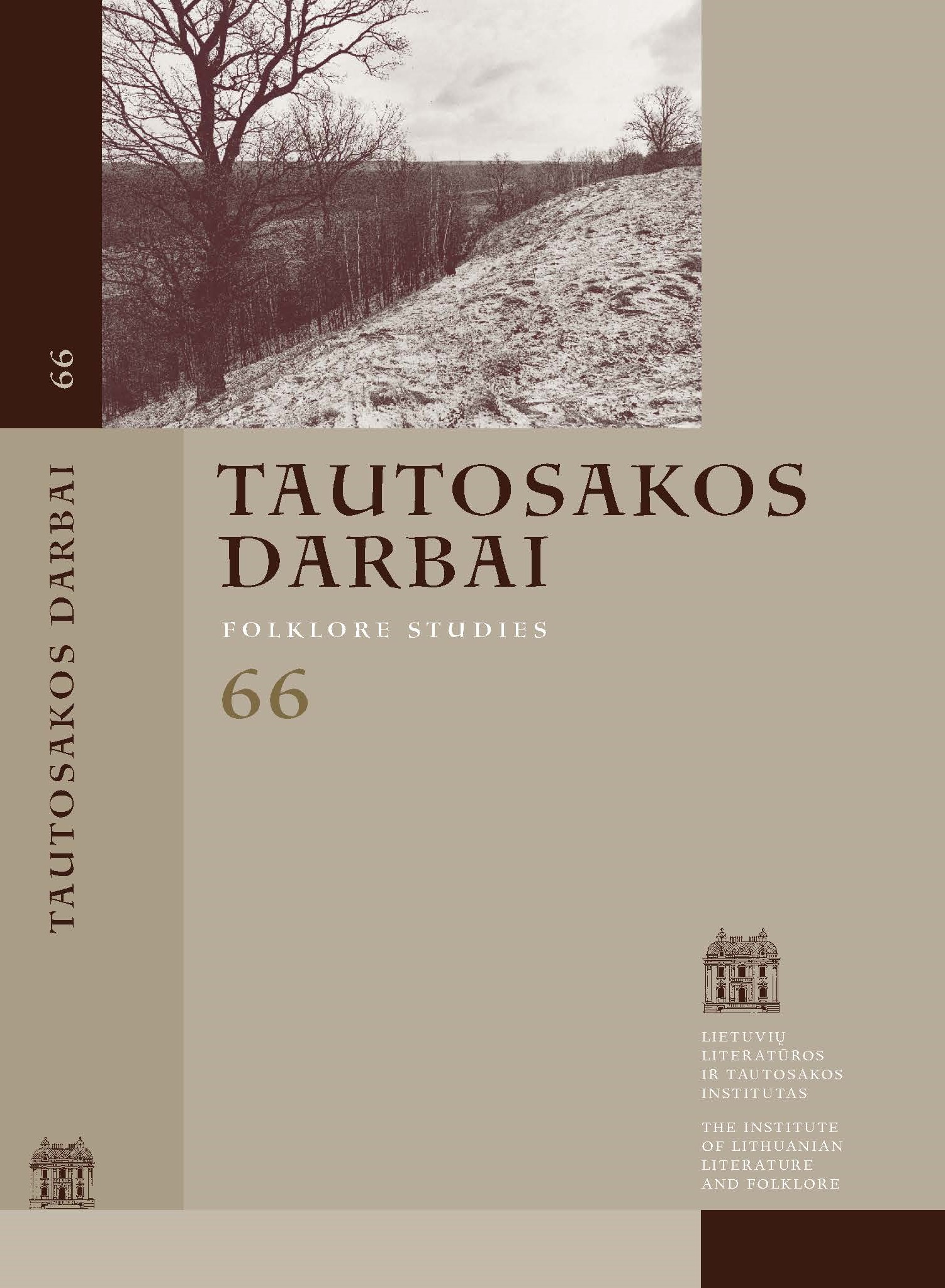Raganavimas Lietuvos kaimo bendruomenėje XXI a. pradžioje (folkloro ekspedicijų duomenimis)
Santrauka
Straipsnyje analizuojama keturių XXI a. pirmajame dešimtmetyje skirtinguose Lietuvos regionuose vykusių folkloro ekspedicijų medžiaga, siekiant nustatyti, kokių tikėjimų ir sakmiškų pasakojimų, susijusių su maginiu kenkimu, šiais laikais dar yra išlikę kaimo bendruomenėse ir kaip visa tai vertina juos pasakojantys žmonės. Tyrimo atspirties taškas buvo Norberto Vėliaus knygoje Mitinės lietuvių sakmių būtybės aprašyta „nepaprastų žmonių“ kategorija, tačiau, analizuojant XXI a. pradžios folkloro užrašymus, pasirodė, jog kai kurios N. Vėliaus išskirtos „nepaprastų žmonių“ rūšys yra beveik visai išnykusios iš pateikėjų atminties (kaip vilktakiai ar dvasregiai), o kitos – raganos, burtininkai, žmonės blogomis akimis ir iš dalies užkalbėtojai – nebeatsiejamai sumišusios, tad straipsnyje dėmesys telkiamas į bendrą jas apimantį reiškinį – raganavimą. Atsižvelgiant į tai, kad raganavimas – universalus ir daugelyje pasaulio kultūrų egzistuojantis reiškinys, siekiama aptarti tam tikrus folklorinėje medžiagoje išryškėjančius jo bruožus, būdingus Lietuvos kaimo bendruomenėms. Remiantis išsamia slovėnų folkloristės Mirjam Mencej kaimynės raganos fenomeno analize, straipsnyje pristatomi būdingi šios pusiau mitinės figūros bruožai ir veikla – kenkimas gyvuliams, meilės magija, kerėjimai, nužiūrėjimai. Parodoma, jog kaimynė ragana aplinkinių suvokiama kaip veikianti pagal opoziciją savas – svetimas ir atstovaujanti abiem jos poliams. Daroma išvada, kad iš to kyla itin stipri baimė ir nerimas, kuriuos šios veikėjos atžvilgiu jaučia kiti kaimo bendruomenės nariai, o drauge tai lemia ir nepaprastą šio fenomeno gyvybingumą.

Šis kūrinys yra platinamas pagal Kūrybinių bendrijų Priskyrimas 4.0 tarptautinę licenciją.
Atsisiuntimai
Skaitomiausi šio autoriaus(ų) straipsniai
- Lina Būgienė, Keturioliktieji „Profesoriaus Norberto Vėliaus skaitymai“ – apie velnius ir velniavas , Tautosakos darbai: T 65 (2023): Tautosakos darbai
- Austė Nakienė, Radvilė Racėnaitė, Vita Ivanauskaitė-Šeibutienė, Rytis Ambrazevičius, Lina Būgienė, Gražina Kadžytė, Rima Visackienė, Irena Žilienė, Andželika Jakubynienė, Kronika , Tautosakos darbai: T 52 (2016)
- Lina Būgienė, Apie Močiutę ir ne tik , Tautosakos darbai: T 64 (2022)
- Lina Būgienė, Giedrė Šmitienė, Jurga Jonutytė, Janinos Degutytės laiškų leidinį pasitinkant , Tautosakos darbai: T 69 (2025): Tautosakos darbai
- Austė Nakienė, Daiva Vaitkevičienė, Vita Džekčioriūtė-Medeišienė, Gražina Kadžytė, Aurimas Bačiulis, Vida Savoniakaitė, Lina Būgienė, Kronika , Tautosakos darbai: T 55 (2018)
- Lina Būgienė, Greta Paskočiumaitė apgynė disertaciją ,,Lietuvos partizaninio karo pasakojimas: trijų kartų tyrimas" , Tautosakos darbai: T 67 (2024): Tautosakos darbai
- Vita Džekčioriūtė, Aušra Žičkienė, Jūratė Šlekonytė, Gražina Kadžytė, Jurgita Ūsaitytė, Lina Būgienė, Daiva Vyčinienė, Kronika , Tautosakos darbai: T 48 (2014)
- Lina Būgienė, Folkloras ir politika: prigimtinės sąsajos ir įsišaknijusios stigmos , Tautosakos darbai: T 61 (2021)
- Lina Būgienė, Išsamus vadovas po latvių mitologijos pasaulį , Tautosakos darbai: T 69 (2025): Tautosakos darbai
- Lina Būgienė, Martynas Vingrys, Irena Snukiškienė, Dalia Urbanavičienė, Gražina Kadžytė, Jurga Sivickaitė-Sadauskienė, Informacija , Tautosakos darbai: T 64 (2022)
